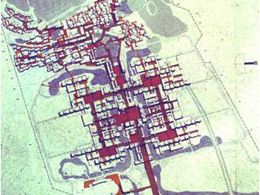ARCHITECTURAL PROJECTS
TOWN/MASTER PLANS
1.University of Ioannina, Greece: master plan of the university campus
I. Triantafillidis (team leader), A. Kotsiopoulos (coordinator), K. Antoniou, F. Kaissef, P. Mimidis, A. Samouilidou, E. Tsoulouvis, 1975.
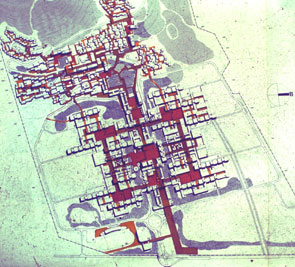
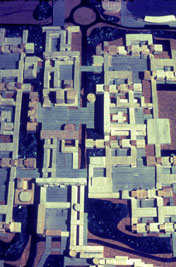
This master plan dealt with the academic planning, the schedule of accommodation and the spatial organization of a new University of 13,000 students and staff in the suburbs of Ioannina, the capital of Epirus, in Greece. The master plan was the result of a thorough investigation of the examples of new campus design in the ‘60s and ‘70s.
The idea was the typical of a new town of more than 500.000 sq. m., on a site larger than the city of Ioannina itself (350 Ha), including a linear central area, a 3-axis development of the academic buildings, a network of linear supplementary uses, such as main lecture theatres and student studios, and a student village for 3.000 inhabitants. The project aimed at (a) importing urban functions and population inside the campus, (b) emphasizing the central zone, (c) overlapping different functions even inside the areas of academic facilities, (d) creating intermediate spaces to facilitate relations between user groups, and (e) using an open system of development to allow future growth.
2.University of Thessaly, Greece: master plan
A. Kotsiopoulos, in collaboration with the Academic Board of the University (President P. Lazaridis) and with the collaboration of D. Daki, D. Nikolaou, Ch. Pantazidis, and E. Spartsi, 1985
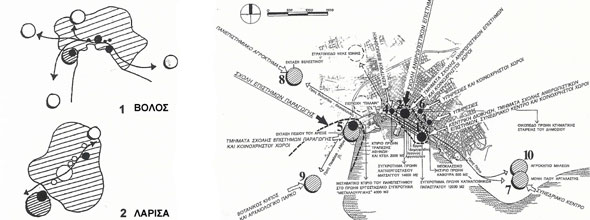
As opposed to the case of Ioannina, that is the typical new-town pattern, the master plan of the new University of Thessaly promoted the idea of urban renewal and rehabilitation of existing tobacco warehouses and other large industrial buildings of the period of 1920 till 1950 in Volos.
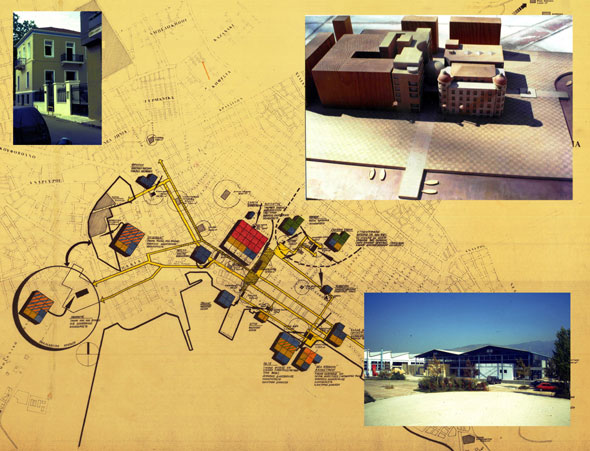
The purpose was to create urban areas, in which university functions, population, and architectural ‘gestures’ against the old buildings, become dominant and characterize distinctive parts of the urban tissue. The university network contained also small campuses in the perimeter of the city intended to house Schools with heavy laboratories.
The desired goal aiming at a clear influence zone for each large pole of a university urban network, remained mostly a dream in a more or less unexpected development of the Volos urban tissue. The three initial poles of the University network, which have been organized during the first ten years of the university function, are:
(a) a neoclassical house in the centre of the city, settling the first administration of the University,
(b) the Papastratos tobacco warehouse complex, a well known trademark of the city of Volos on a dominant place of the sea-side quay, with a very interesting transformation project by M. Chryssomallidis, L. Spania, P. Tzonos, G. Heupel, X. Heupel et al., and
(c) the Paparrigas machine factory and warehouse which is included in this catalogue.
3.Technical University of Crete, Chania, Greece: master plan of the Akrotiri University campus
A. Kotsiopoulos (coordinator), A. Lagopoulos, P. Tzonos, M. Papanikolaou, I. Sakellaridou, G. Synefakis, M. Vagionaki, S. Economakis, M. Tzimopoulou, 1991
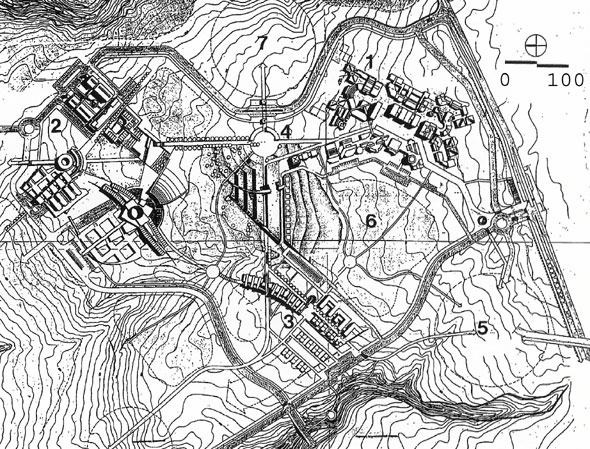
The Technical University of Crete started its development from the historical centre of the city of Chania and moved later to a 300 Ha campus at Akrotiti 10 km from the city. As opposed to both the case of Ioannina - the typical new-town pattern - and that of the new University of Thessaly - the idea of urban renewal and rehabilitation of existing buildings -, the master plan of the Technical University of Crete at the Akrotiri campus was based on the idea of autonomous ‘islands’, like villages (such as the first kernel of the campus designed be the S. and D. Antonakakis ‘Studio 66’ office) or cloisters (such as the first building of the School of Mineral Resources on the other side of the site).
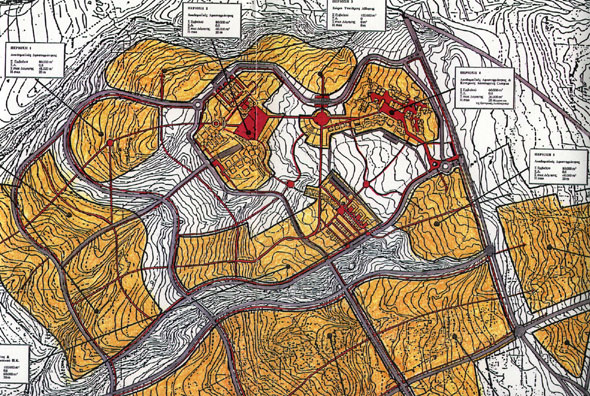
The so-called ‘islands’ are planned to enable the fast development of an urban atmosphere in each ‘island’ and, most of all, and to allow their designers to follow architectural patterns and time-schedules not necessarily related to each other. Following the above Master Plan, the first two academic “islands” have been already developed combined with the first housing complex and other supplementary buildings across the main pedestrian axes of the campus. The experiment proved to be flexible in terms of a peaceful coexistence among different architectural principles and realistic in terms of time schedule, featuring a third acceptable type of campus design beyond the autonomous city and the urban network.
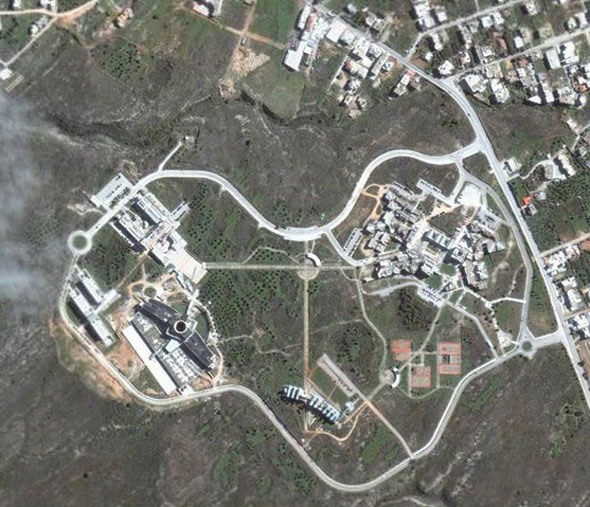
4.Aristotle University of Thessaloniki: new master plan of the main campus
A. Kotsiopoulos , G. Kontaxakis, P. Panagiotopoulos, in collaboration with a group of architects and planners, coordinated by the University authorities, 1989-2005
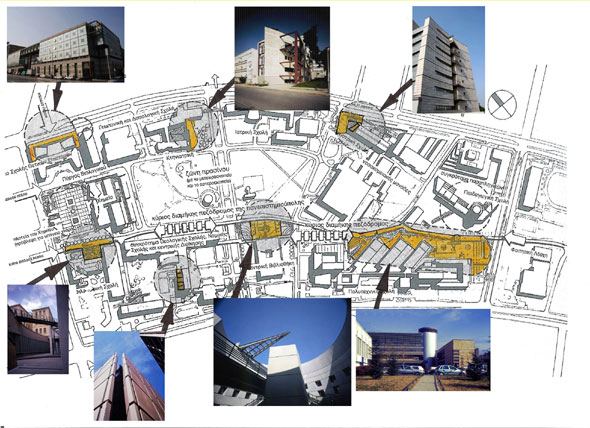
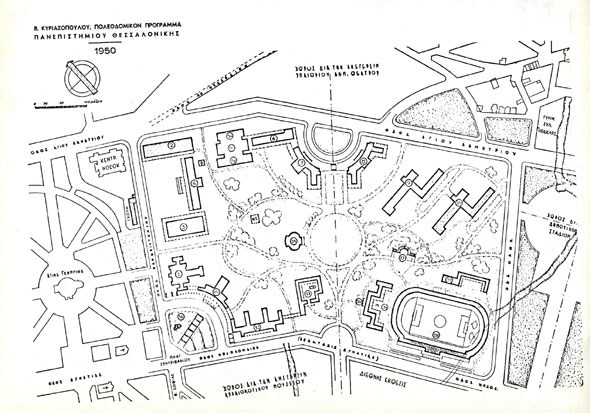
The Aristotle University of Thessaloniki was founded in 1926 and is currently the largest Greek University with a population of more than 70,000 students and staff. The main target of the new Master Plan was to fulfil a series of urgent requirements and, at the same time, to enrich the urban character of the campus. The two basic ‘gestures’ of this plan were:
(a) to design a sequence of underground or on-a-slope buildings along the main pedestrian axis, without creating new built mass, and
(b) to design new urban ‘façades’ on the north side, by transforming the existing buildings, which were either orientated towards the interior of the campus, or simply designed without taking into account the shape of their open space.
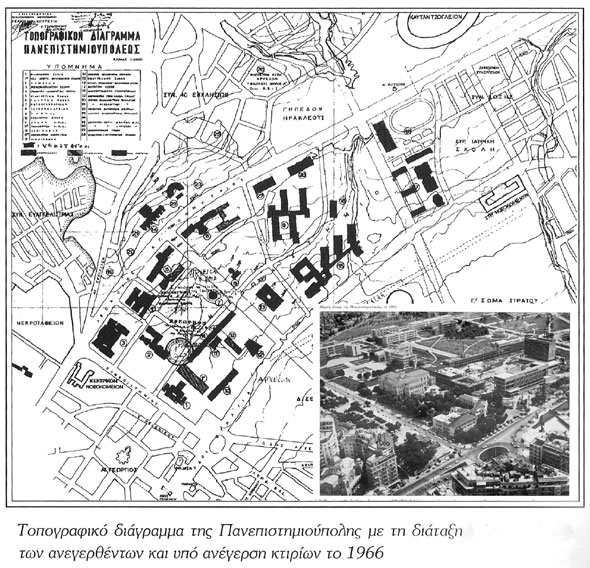
Related articles:
- Α.Μ. Kotsiopoulos & Partners Architects ( 16 March, 2009 )
- Five metal cubes ( 30 August, 2010 )
- New headquarters for the “Alumil” ( 22 January, 2009 )
- House 2 in Thessaloniki Old Town ( 22 May, 2009 )
- Cultural and Recreation Centre ( 05 December, 2016 )
- Green building ( 22 May, 2009 )
- Extension of the Faculty of Sciences, Aristotle University of Thessaloniki ( 27 July, 2010 )
- New building for the Main Library, Aristotle University of Thessaloniki ( 20 April, 2010 )
- Building complex for the Biomedical Research Foundation of the Academy of Athens ( 15 May, 2010 )
- Erasinio Oncology and Cancer Centre in Coropi, Athens ( 22 May, 2009 )
- The Crassas Multi-Cultural Centre in Thessaloniki ( 22 May, 2009 )
- Introduction ( 20 April, 2009 )
